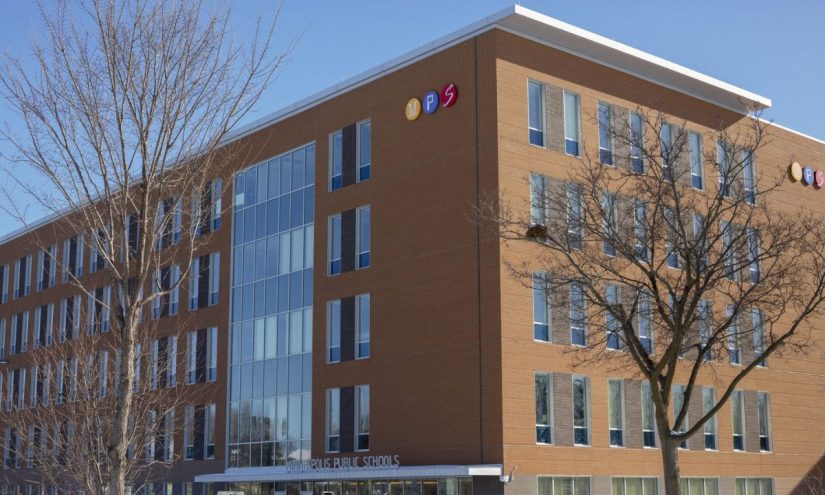The Minneapolis School Board has initiated discussions regarding potential school closures in response to ongoing enrollment declines and financial challenges. In a recent meeting, the board formally requested Superintendent Dr. Lisa Sayles-Adams to provide information that could lead to the closure of underutilized school facilities. This resolution is part of a broader strategy to address the district’s structural inefficiencies and financial sustainability.
The Minneapolis Public Schools (MPS) currently serves approximately 29,000 students, while the district has the capacity for 42,000. This disparity has resulted in many schools operating below capacity, leading to significant fixed costs that continue to burden the district’s budget. These fixed costs include salaries for essential staff such as principals, secretaries, and custodians, which do not decrease even as student enrollment declines.
In light of these challenges, the board’s resolution outlines several areas for district administrators to investigate:
- Efficient use of existing school buildings
- Potential changes to magnet programs
- Strategies to increase district enrollment
The discussion about reducing the number of schools in the district has been ongoing for several years. A comprehensive financial assessment conducted in October 2022 indicated that without significant cost-cutting measures, the district would deplete its reserves, with expenses projected to exceed revenues by the end of the fiscal year 2026. Although the district has implemented measures such as service cuts and increased class sizes to mitigate this financial strain, it remains unable to achieve a balanced budget without relying on reserve funds.
Prior analyses have shown that simply increasing enrollment will not resolve the district’s financial issues, particularly given the operational costs associated with maintaining numerous small schools. For comparison, the Anoka-Hennepin School District operates 37 buildings for about 37,000 students, whereas Minneapolis operates 61 buildings for a significantly smaller student body.
The board’s discussions on school closures began to gain traction in March 2023, when former board chair Sharon El-Amin requested a draft plan for “school transformation” from then-interim superintendent Rochelle Cox. Although no immediate actions were taken, the board later passed a resolution directing the district to evaluate its physical space. Dr. Sayles-Adams, who began her tenure in early 2024, has committed to addressing the issue of “right-sizing” the district after the budget is approved in June 2024, responding to community concerns about the district’s operational efficiency.
As enrollment continues to decline, the district faces increased financial pressures. Schools with low enrollment require more funding per student to support building-level staff and essential services. This situation has led to reduced access to programs such as art, music, and physical education, as well as advanced coursework opportunities at the middle and high school levels. Furthermore, many high schools are now sharing athletic teams due to insufficient student populations and funding to support independent programs.
The loss of services and extracurricular activities has driven some families to seek educational options outside the district, further exacerbating enrollment declines. Following a 15% drop in enrollment after the COVID-19 pandemic, the district has seen a slight increase in recent years, attributed largely to an influx of students newly arriving from Central America. This demographic shift has resulted in a rise in English learner students, from 17% to 23% of the district’s population since the 2021-22 school year.
Despite the increase in English learner students, the district faces significant challenges in funding. The cost of providing services for these students exceeds the financial support received from state and federal sources. Although state aid for English learners was increased during the 2023 legislative session, it remains insufficient to cover the intensive services required for students with low English proficiency. Additionally, many of these newcomer students are unhoused, leading to increased transportation costs as the district complies with federal laws regarding student transportation.
Looking ahead, demographic trends indicate that enrollment is likely to continue declining due to factors such as lower birth rates and families opting for charter or suburban schools. According to demographer Hazel Reinhardt, once families leave for alternative educational options, it becomes challenging for districts to re-engage them. Given that a significant portion of the district’s funding is tied to enrollment numbers, the ongoing decline poses a substantial fiscal challenge.
The district’s financial difficulties are not unique to Minneapolis; many large urban districts, including those in Oakland, San Francisco, Denver, Seattle, and Portland, are grappling with similar issues. While some districts have closed a limited number of schools, these measures have not been sufficient to stabilize their finances. In Seattle and San Francisco, public pressure has led to the abandonment of closure plans, leaving both districts with increasing budget deficits.
In conclusion, the Minneapolis School Board’s exploration of potential school closures reflects a critical assessment of the district’s operational efficiency and financial viability. As the district navigates declining enrollment and rising costs, the outcomes of these discussions will significantly impact the future of education in Minneapolis.




